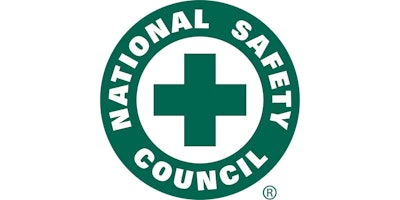
According to a National Safety Council survey released today, 77 percent of Americans incorrectly think their homes are safe havens when in fact, 75 percent of preventable incidents—commonly known as “accidents”—happen in homes and communities. A staggering four in 10 people have been directly impacted by preventable deaths; however, despite the widespread devastation, only 49 percent of those surveyed believe that the U.S. can eliminate most or all “accidental” deaths. More than one-third view the task as hopeless.
The findings underscore Americans’ overall misunderstanding of preventable deaths, which are the third leading cause of mortality in the U.S. and have reached an all-time high, largely driven by the opioid crisis. A person has a one-in-24 lifetime odds of dying from a preventable incident, such as a drug overdose, a car crash, a fall, a drowning, a choking or a fire. Research shows that preventable deaths are completely avoidable; however, many people focus on the wrong things. When asked about their biggest safety fears, NSC survey respondents said they are more concerned about homicide (80 percent) and accidental shootings (79 percent) than overdoses from prescription or illicit drugs (71 percent), although drug overdose is the leading cause of preventable death.
For perspective, a person’s lifetime odds of dying from select causes are:
| Accidental Opioid Overdose | 1 in 96 |
| Motor Vehicle Crash | 1 in 103 |
| Fall | 1 in 114 |
| Gun Assault (Homicide) | 1 in 285 |
| Drowning | 1 in 1,117 |
| Fire or Smoke | 1 in 1,474 |
| Choking | 1 in 2,696 |
| Accidental Gun Discharge | 1 in 8,912 |
| Cataclysmic Storm | 1 in 31,394 |
| Plane Crash | 1 in 188,364 |
| Lightning Strike | 1 in 218,106 |
NSC is releasing the survey to kick off National Safety Month, which the Council established in 1996 to educate about preventable deaths and how to end them.
“We lose 465 people each day to incidents we know how to stop,” said Lorraine M. Martin, president and CEO of the National Safety Council. “Every single death is preventable. We know what needs to be done; we just need the will to do it.”
Other important findings from the poll include:
- 21 percent of respondents say their own actions have contributed to a preventable death or injury
- When asked what an “accidental death” means to them, 72 percent correctly said car crashes, and 62 percent said falls. But only 40 percent associated drug overdose with “accidental death” even though it is the leading cause.
- Two in three people do not believe more enforcement or legislation will help eliminate preventable deaths, but both are necessary to change behavior and save lives
- Encouragingly, 74 percent believe the U.S. can eliminate most motor vehicle deaths, which claim as many as 40,000 lives each year. The Road to Zero Coalition, managed by NSC, currently is working toward ending all roadway fatalities.
- 67 percent believe individuals play the biggest role in eliminating preventable deaths; only 25 percent say the government is most responsible. However, a combination of education, legislation and enforcement is among the most effective behavior change formulas in public health. For example, the triad of education, legislation and enforcement dramatically increased seat belt usage rates between the 1980s and 1990s, and now more than 90 percent of front seat passengers buckle up.
The full survey and methodology are available at nsc.org/preventabledeathsurvey. For more information about National Safety Month (NSM), visit nsc.org/nsm and join the conversation on social media with the hashtag, #NSM






















